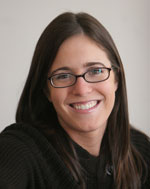Twenty Something / Christina Capecchi
Comfort the
shipwrecked:
Titanic priest a model of mercy
 Father Thomas Byles was 42 when he boarded the Titanic with his second-class ticket and portable altar stone. He had made arrangements with Captain Edward Smith to secure space on the ocean liner to celebrate Mass. Even on vacation a priest is never off duty, he knew, but the Catholic convert would have it no other way.
Father Thomas Byles was 42 when he boarded the Titanic with his second-class ticket and portable altar stone. He had made arrangements with Captain Edward Smith to secure space on the ocean liner to celebrate Mass. Even on vacation a priest is never off duty, he knew, but the Catholic convert would have it no other way.
He saw his faith as “a wonderfully great gift,” he once wrote to his brother, William, “a truly marvelous and altogether supernatural support…”
It was William who had prompted Father Byles’ cross-Atlantic trip, asking his oldest brother to come to New York to marry him.
The British priest had served a decade of priestly ministry, and was well loved by his small rural parish, St. Helen’s, where folks helped pay for his Titanic ticket. It cost 13 pounds.
He boarded on Wednesday, April 10, 1912—three days after Easter Sunday—sized up the ship, then wrote to his parish housekeeper while the Titanic was anchored at Cherbourg, France: “Everything so far has gone very well, except that I have somehow managed to lose my umbrella.” He wondered when he would next be able to celebrate Mass, and promised to write again as soon as he arrived in New York.
Clad in his Roman collar, the priest with the gentle, scholarly look—glasses, a strong nose and firm jawline—became a familiar sight throughout the week. Father Byles spent most of Saturday, travel day four, hearing confessions. On the fifth day, he celebrated Mass in the second-class lounge and again in the designated third-class space. It was Divine Mercy Sunday. He preached about the prospect of “spiritual shipwreck,” urging the Catholics to seek a spiritual lifeboat in the form of prayer and the sacraments.
At 11:40 that night, Father Byles was on the deck clutching his breviary and praying Night Prayer when the Titanic struck the iceberg.
He packed a lifetime of priestly ministry into the next three hours, performing the most intense mix of corporal and spiritual works of mercy he had ever done—a model for all in this Holy Year of Mercy.
Once he recognized the gravity of the situation, he headed down to the steerage to help third-class women and children onto the deck and into the lifeboats. “Be calm, my good people,” he was heard saying.
Father Byles met the haunting sights, sounds and smells with an otherworldly peace. “A few around us became very excited,” Ellen Mocklare, a young Irish woman, later told reporters, “and then it was that the priest again raised his hand and instantly they were calm once more. The passengers were immediately impressed by the absolute self-control of the priest.”
Survivors said Father Byles was offered a lifeboat twice but refused it, determined to minister to passengers in their hour of greatest need, even though it would cost him his life. He heard confessions, gave absolution, offered blessings and led prayers, including the Hail Mary, whose back-and-forth recitation provided a steady measure amid chaos. The words “Holy Mary” rang out loud and clear.
As 2:20 a.m. neared, more than 100 people were trapped on the stern, raising perilously high, Father Byles among them. They knelt before him in an act of contrition, and he granted them general absolution.
As Ellen Mocklare was carried away on a lifeboat, she could hear the priest’s voice and murmured responses to his prayers. “They then became fainter and fainter, until I could only hear the strains of ‘Nearer, My God, To Thee’ and the screams of the people left behind.”
“There let the way appear, steps unto heaven,” the old hymn goes. “All that thou sendest me, in mercy given. Angels to beckon me nearer, my God, to Thee.”
(Christina Capecchi is a freelance writer from Inver Grove Heights, Minn., and the editor of SisterStory.org.) †
 Father Thomas Byles was 42 when he boarded the Titanic with his second-class ticket and portable altar stone. He had made arrangements with Captain Edward Smith to secure space on the ocean liner to celebrate Mass. Even on vacation a priest is never off duty, he knew, but the Catholic convert would have it no other way.
Father Thomas Byles was 42 when he boarded the Titanic with his second-class ticket and portable altar stone. He had made arrangements with Captain Edward Smith to secure space on the ocean liner to celebrate Mass. Even on vacation a priest is never off duty, he knew, but the Catholic convert would have it no other way.